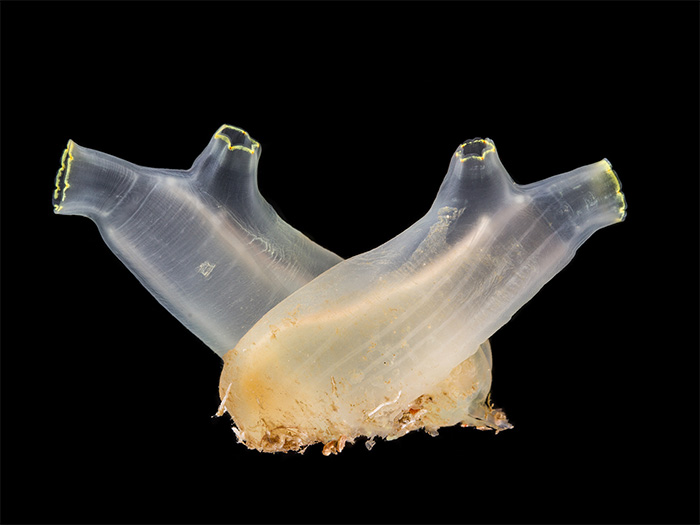The marine invertebrate Ciona robusta, a model species for studying developing organisms. Stefan Siebert
The list of model organisms employed by scientists is long and diverse. Almost none bear any resemblance to humans, but all in one way or another share common biologies that can help inform us about us.
Some models are familiar, such as mice, monkeys and the iconic “guinea pig,” but many others less so, including viruses, bacteria, plants, worms, fruit flies and zebrafish. Add to this latter list Ciona robusta, a translucent marine invertebrate that resembles a laboratory flask or perhaps an empty stomach.
Though deceptively simple in appearance (and much vilified as an invasive species in nature), C. robusta have proven their worth as a model for genetic and embryonic studies, due to their rapid development and traceable cell lineage.
Latest case in point: A new study, led by Emma Farley, PhD, an assistant professor in the UC San Diego School of Medicine and School of Biological Sciences, published in Cell Reports, that found how the right genes are expressed in the right order during embryological development follows not just a precise pattern, but is governed by rules similar to those that structure the grammar of language. You can read more here.
– Scott LaFee
